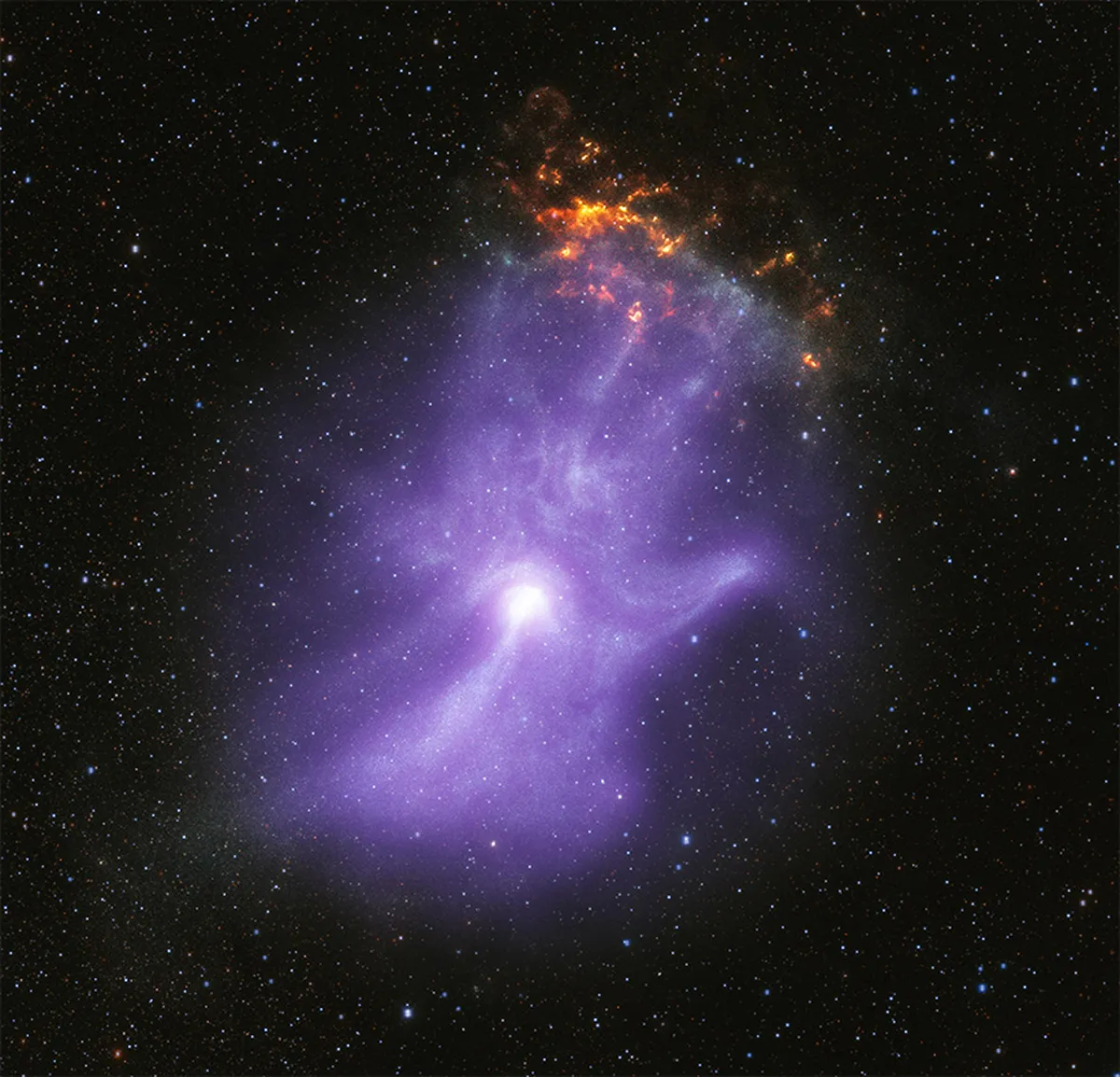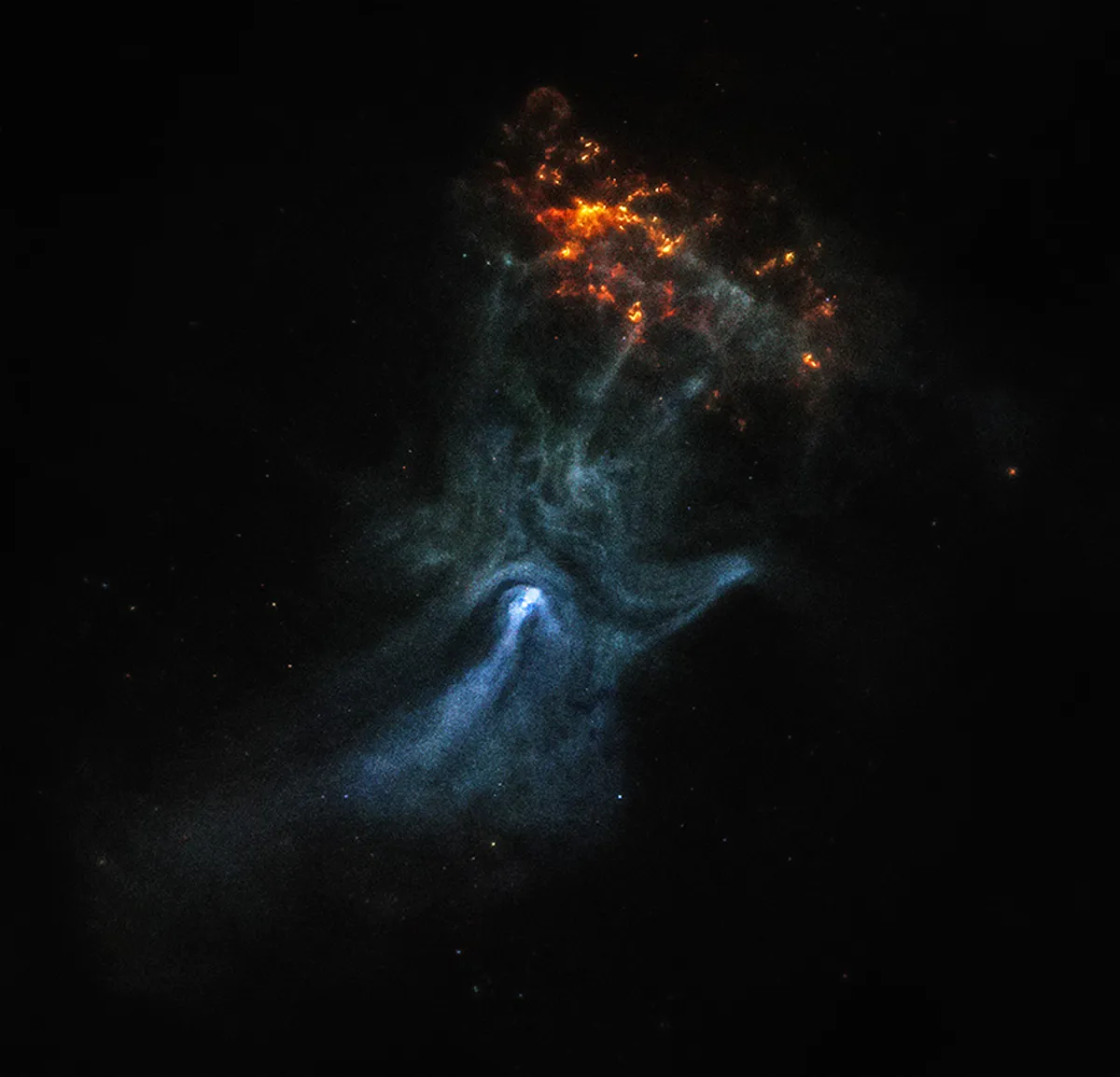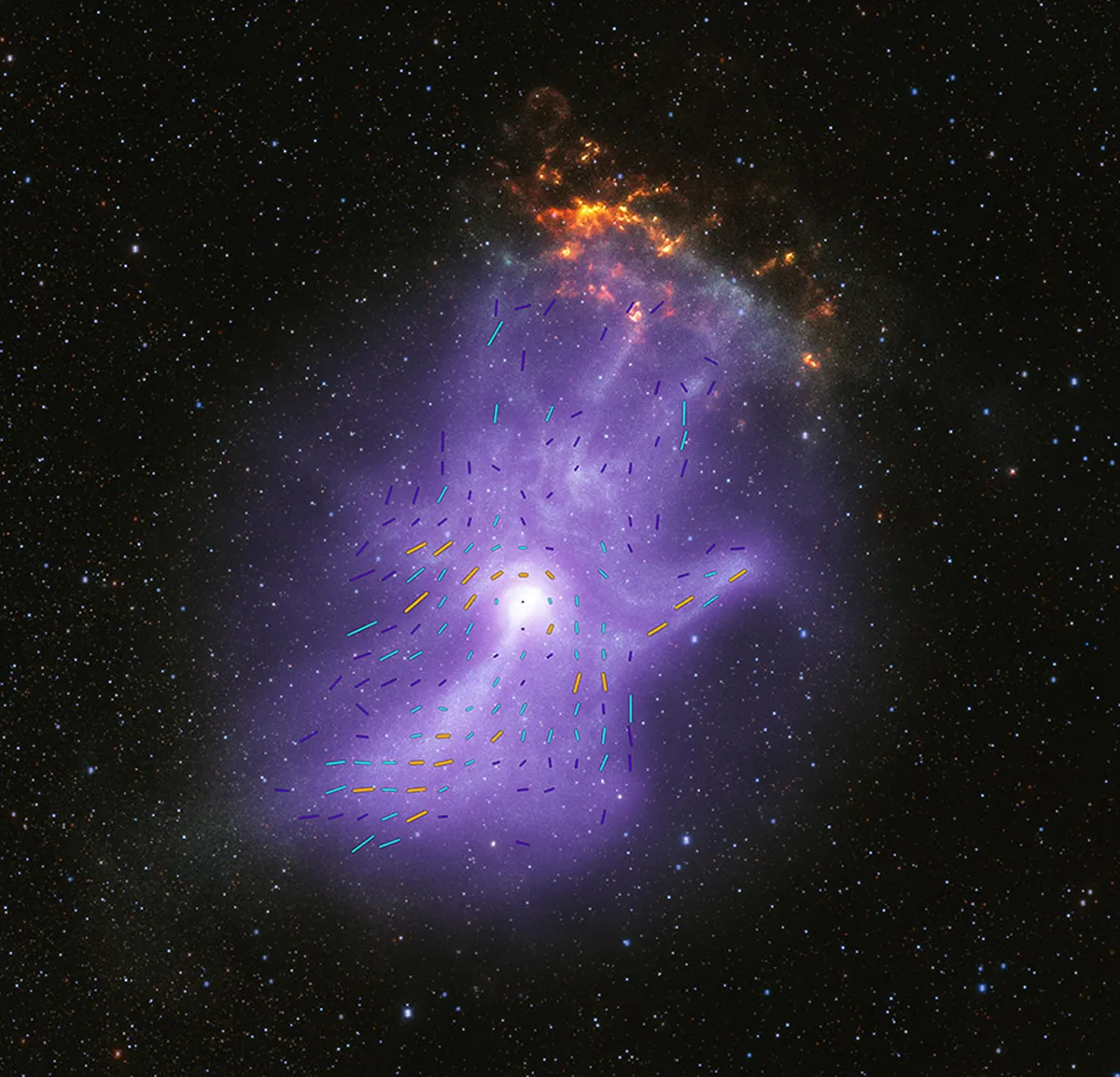Three of the world’s most powerful observatories have combined their observing power to capture a ghostly ‘hand’ in space, just in time for Halloween.
The hand is in fact a pulsar wind nebula known as MSH 15-52, which surrounds pulsar PSR B1509-58.
Pulsars are spinning neutron stars that emit a pulse of energy in the direction of Earth, much like a lighthouse beacon.
For more spooky cosmic images, have a look at NASA's Halloween Sun, the jack-o-lantern nebula, a glowing cosmic eye and ghostly galactic collision.

Pulsar PSR B1509-58 is located at the base of the ghostly hand in this brand new image, captured by NASA's Chandra X-ray Observatory and the Imaging X-ray Polarimetry Explorer (IXPE), with infrared data from the Dark Energy Camera Plane Survey (DECaPS2).
The pulsar was first observed by Chandra in 2001, but this latest image of the target combines data from all three telescopes.
Chandra data is seen in orange, green and blue; IXPE data is seen in diffuse purple and the Dark Energy Camera data is seen in red and blue.

Mapping MSH-15-52's magnetic field
IXPE data has enabled astronomers to map the magnetic field of the pulsar nebula for the first time.
This shows the electric field orientation of X-rays, determined by the magnetic field of the X-ray source.
In the magnetic field map seen below, short straight lines mark the direction of the local magnetic field.

Orange bars show the most precise measurements; cyan and blue the least precise.
The map actually accentuates the hand-like qualities of the ghostly nebula, producing a cosmic image fit for Halloween.
You can read the full paper about this image release at arxiv.org/abs/2309.16067.
